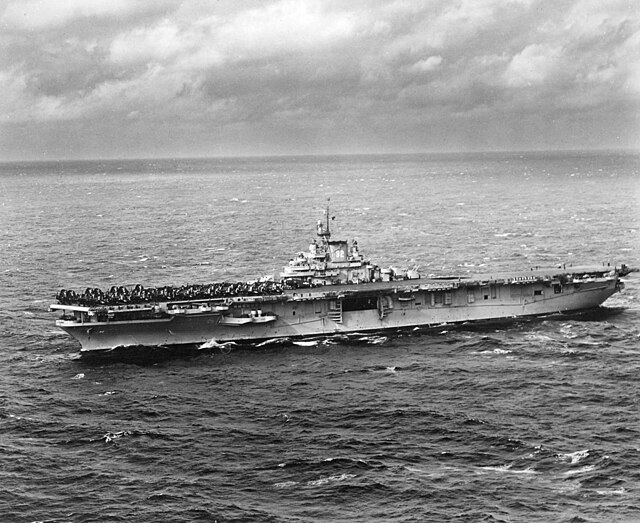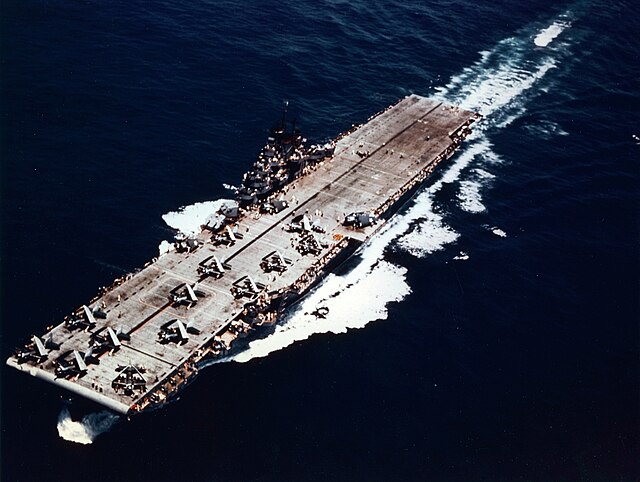USS Wasp (CV/CVA/CVS-18) was one of 24 Essex-class aircraft carriers built during World War II for the United States Navy. The ship, the ninth US Navy ship to bear the name, was originally named Oriskany, but was renamed while under construction in honor of the previous Wasp (CV-7), which was sunk 15 September 1942. Wasp was commissioned in November 1943, and served in several campaigns in the Pacific Theater of Operations, earning eight battle stars. Like many of her sister ships, she was decommissioned shortly after the end of the war, but was modernized and recommissioned in the early 1950s as an attack carrier (CVA), and then eventually became an antisubmarine carrier (CVS). In her second career, she operated mainly in the Atlantic, Mediterranean, and Caribbean. She played a prominent role in the manned space program, serving as the recovery ship for five Project Gemini missions: Gemini IV, Gemini VI, Gemini VII, Gemini IX, and Gemini XII. She was retired in 1972, and sold for scrap in 1973.

USS Wasp underway in 1967
Wasp underway, 22 February 1944
Wasp at Ulithi atoll on 8 December 1944
USS Wasp on 6 August 1945
Essex-class aircraft carrier
The Essex class is a retired class of aircraft carriers of the United States Navy. The 20th century's most numerous class of capital ship, the class consisted of 24 vessels, which came in "short-hull" and "long-hull" versions. Thirty-two ships were ordered, but as World War II wound down, six were canceled before construction, and two were canceled after construction had begun. Fourteen saw combat during World War II. None were lost to enemy action, though several sustained crippling damage due to kamikaze attacks. Essex-class carriers were the backbone of the U.S. Navy from mid-1943 and, with the three Midway-class carriers added just after the war, continued to be the heart of U.S. naval strength until supercarriers joined the fleet in the 1950s, 1960s and 1970s. Several of the carriers were rebuilt to handle heavier and faster aircraft of the early jet age, and some served until well after the Vietnam War. Of the 24 ships in the class, four of the carriers: Yorktown, Hornet, Lexington, and Intrepid, have been preserved as museum ships.

USS Philippine Sea (CVA-47) underway in 1955
1941 design plans for the Essex class.
Leyte underway in 1948
Yorktown at sea in 1943








